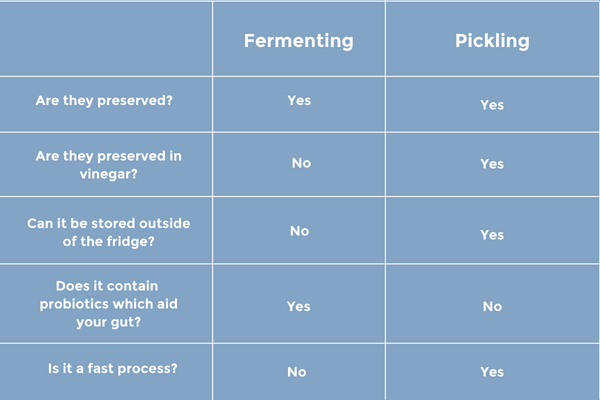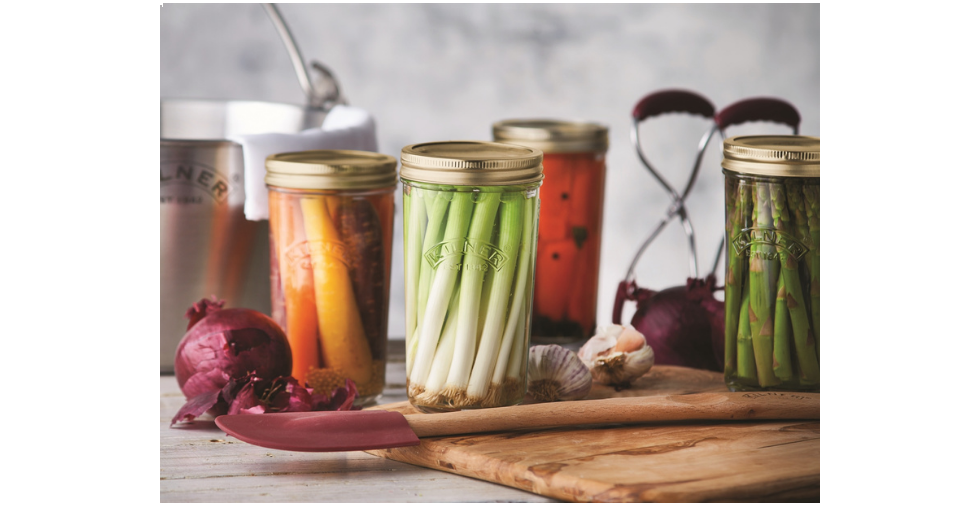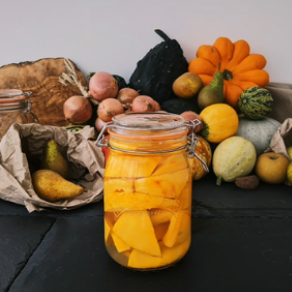What is the difference between fermenting and pickling?
Fermenting and pickling are methods of preserving food that has been used generation after generation. The difference lies in how they’re preserved.
Many people get confused over what pickling & fermenting is. Both a pickled cucumber and a fermented cucumber will often be called pickles. Just to confuse everyone even more, the term “pickling” can sometimes mean pickling with vinegar or fermenting. In this guide, pickles mean submerging something in vinegar and fermenting is submerging something in water & salt.
Pickling and fermenting at home are cost-effective and healthier alternatives to shop-bought products, allowing you to experiment with all different flavours. Whether you're an experienced preserver or just starting your journey with preserving, Kilner® can provide you with all the right tools, guides, and recipes.
What is fermentation?
The idea of fermented foods has been a rising health trend in recent years due to its benefits for the gut, however the fermenting process has been around for many years. It’s a low cost and easy way to preserve nutritious foods at home as you only need the fresh produce you want to ferment, glass jars and a weight to keep everything submerged. Not only is it low cost and easy for any household to do, but fermented food also have a longer shelf life and it’s an incredible way of reducing your food waste.
Lactic Acid Fermentation and Alcoholic Fermentation
You may have heard of the two types of fermentation – alcoholic fermentation and lactic acid fermentation.
Alcoholic fermentation uses yeasts to convert sugar into alcohol. This fermentation process produces beer and wine.
Lactic acid fermentation is used to preserve foods like meat, dairy and vegetables. In this process, bacteria consumes the sugars in foods and produces lactic acid. The lactic acid bacteria destroy the organisms that cause spoilage, so the fermented food lasts longer and gives it that signature tangy taste.
What foods can you ferment?
You can pretty much ferment anything! Most fruits and vegetables, dairy, eggs, legumes – the list goes on. For beginners, we recommend starting with vegetables as they’re the easiest to ferment.
Low chlorophyll vegetables like carrots, cabbage, beetroot, celery, cucumber, and chilli are great to ferment. You can even mix the vegetables together along with complementing spices and herbs to add some extra flavour. Our fermented red cabbage and apple recipe is a good one to follow for beginners.
The most popular fermented foods that you may not be aware are fermented are miso, kimchi, sourdough bread, sauerkraut, tempeh, and kefir.
What is pickling?
Like fermentation, pickling isn’t a new trend. Pickling goes back as far as the Middle Ages all the way up until today. People pickled when food was rationed to lengthen the shelf life.
When you want to pickle something, typically fresh vegetables, you submerge it in a vinegar and preserve it in a glass jar. This lengthens the shelf life of the vegetable, makes it softer and gives it that sour, tangy taste.
Today we pickle vegetables for flavour. Pickling vegetables that aren’t typically in season all year round preserve some of their nutrition, so you can enjoy those nutritiously- packed vegetables any time. If you want to experiment and add extra flavours to your pickles, try chilli, garlic, or black peppercorns - they add a nice heat to the pickle flavour!
What foods can you pickle?
You can pickle almost anything! The most popular things to pickle are fruits, vegetables, and eggs. Cucumber, beetroot, onions, red cabbage, mushrooms, peppers, carrots, peaches, and cherries are amongst the favourites to pickle.
Fermenting vs Pickling
Let’s take the example of a fermented and pickled cucumber and see how they differ. Both fermented and pickled cucumbers are preserved but the process to how they’re preserved are different. Both methods ensure the cucumber has complex flavours a freshly harvested cucumber lack. You can add garlic, chilli and other vegetables and spices to both fermented and pickled cucumbers for extra flavour.
How are they different? The pickled cucumber is preserved in vinegar, so it’s not fermented. The pickle preserves some of the cucumber’s nutrients but doesn’t offer any probiotic benefit like how a fermented cucumber would add.
A vinegar pickle is safe to store outside of the fridge because the vinegar protects the pickle from bad bacteria.
When cucumber is fermented, a starter containing live cultures help kick start the process. In a brine of salt and water, the bacteria can convert the sugar into lactic acid, which benefits your gut. Fermented foods need to be kept in the refrigerator as a cold temperature helps fermented pickles maintain it’s crunch.












